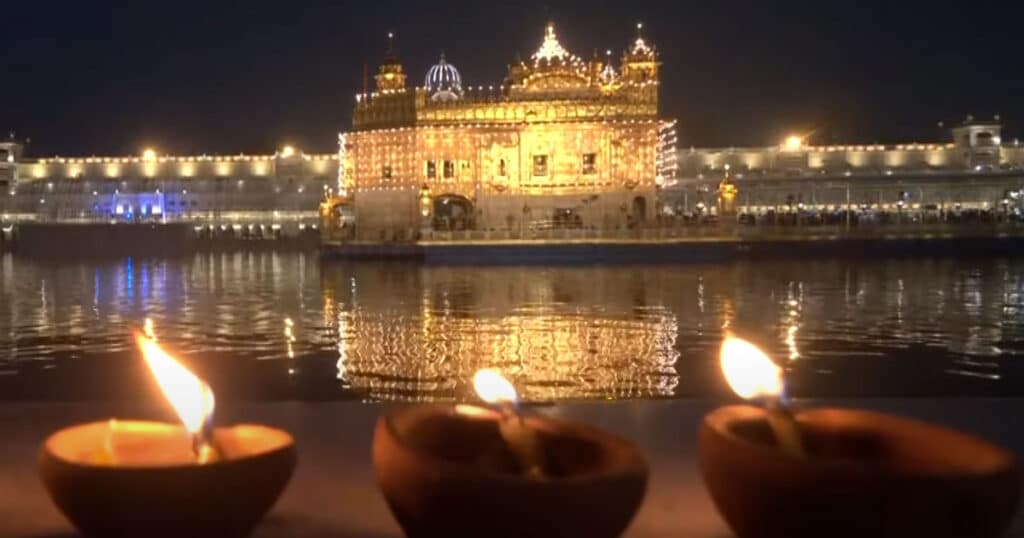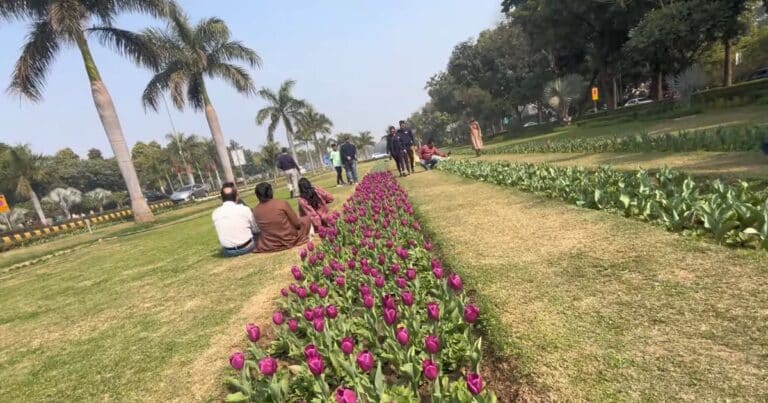Guru Nanak Jayanti, or Gurpurab, is a sacred and joyous occasion celebrated by Sikhs worldwide. This auspicious day marks the birth anniversary of Guru Nanak Dev Ji, the founder of Sikhism and the first of the ten Sikh Gurus. Observed on the full moon day of the month of Kartik, according to the Nanakshahi calendar, Guru Nanak Jayanti usually falls in November.
Why is Guru Nanak Jayanti Celebrated?
Guru Nanak Jayanti is celebrated to honor the life and teachings of Guru Nanak Dev Ji, who was born in 1469 in the village of Talwandi, now known as Nankana Sahib, in present-day Pakistan. Guru Nanak’s teachings revolve around the oneness of God, equality, and the importance of selfless service. He laid the foundation for Sikhism, emphasizing love, humility, and devotion.

Interesting Facts about Guru Nanak Jayanti
- Nagar Kirtan Procession: One of the prominent features of Guru Nanak Jayanti celebrations is the Nagar Kirtan procession. Devotees gather to participate in a vibrant and colorful procession, singing hymns and carrying the Sikh flag, known as the Nishan Sahib.
- The Akhand Path: A continuous 48-hour reading of the Guru Granth Sahib, the holy scripture of Sikhism, is an integral part of the Guru Nanak Jayanti celebrations.
- Gurdwara Decorations: Gurdwaras, Sikh places of worship, are beautifully decorated for Guru Nanak Jayanti. Elaborate arrangements are made to welcome devotees, and special prayers and kirtans (devotional songs) are organized.
- Community Service: As an embodiment of Guru Nanak’s teachings, Sikhs actively participate in Seva, or selfless service, during the celebrations. This Seva includes organizing langars (community meals) open to people of all faiths, emphasizing equality and unity.
- Akal Takht Ceremony: The Akal Takht, one of the five Takhts (thrones) in Sikhism, plays a significant role during Guru Nanak Jayanti. To commemorate Gurpurab, a special ceremony is held at the Akal Takht in Amritsar, Punjab.
- Global Celebrations: Guru Nanak Jayanti is not limited to India; it is celebrated with enthusiasm and devotion across the globe. Sikh communities worldwide celebrate this significant day, fostering a sense of unity and brotherhood.
Gurpurab Celebrations in the Golden Temple: A Divine Spectacle
Among the myriad celebrations of Guru Nanak Jayanti, the festivities at the Golden Temple in Amritsar stand out as a divine spectacle. The Golden Temple, also known as Sri Harmandir Sahib, is the holiest shrine in Sikhism and serves as the spiritual and cultural nucleus for Sikhs worldwide. The Gurpurab celebrations at the Golden Temple are a mesmerizing blend of religious fervor, cultural richness, and communal harmony. The complex is illuminated with thousands of lights, creating a breathtaking ambiance. The sacred pond surrounding the temple, Amrit Sarovar, reflects the golden glow, adding to the ethereal beauty of the surroundings.
Participating in the Gurpurab celebrations at the Golden Temple is an enriching experience for the general public for several reasons. Firstly, it provides a unique opportunity to witness the spiritual grandeur and cultural heritage of Sikhism in its purest form. The atmosphere is charged with devotional hymns, creating a sense of tranquility and reverence. Additionally, the community kitchen, or langar, serves free meals to all visitors, embodying the principle of equality and selfless service.
Moreover, attending the Gurpurab celebrations at the Golden Temple offers a chance for people from diverse backgrounds to engage in a shared cultural experience. The event welcomes individuals of all faiths to join the celebrations. The inclusive nature of the festivities promotes understanding, tolerance, and unity, fostering a sense of community among attendees.
Significance of Guru Nanak Jayanti
- Promotion of Equality: Guru Nanak emphasized the equality of all humans, regardless of caste, creed, or gender. Guru Nanak Jayanti serves as a reminder of these principles and encourages followers to live by them.
- Spiritual Reflection: The day provides an opportunity for spiritual reflection and self-improvement. Sikhs use this occasion to delve deeper into Guru Nanak’s teachings and apply them to daily life.
- Unity and Brotherhood: The celebrations unite people, transcending boundaries and fostering a sense of unity and brotherhood. The principles of Guru Nanak promote harmony and peaceful coexistence.
- Service to Humanity: Seva, or selfless service, is a core aspect of Sikhism. Guru Nanak Jayanti inspires individuals to engage in acts of kindness and service to humanity, reflecting the compassionate spirit of Sikhism.
- Cultural Richness: The festivities surrounding Guru Nanak Jayanti showcase the rich cultural heritage of Sikhism. Traditional music, hymns, and rituals add vibrancy to the celebrations, creating an immersive experience for participants.
Guru Nanak Jayanti celebrates love, equality, and spirituality. It transcends religious boundaries, spreading the message of peace and unity and inspiring and guiding people from all walks of life. As Sikhs and people from diverse backgrounds come together to commemorate Guru Nanak’s teachings, the world witnesses a beautiful tapestry of humanity woven with threads of compassion and understanding.



